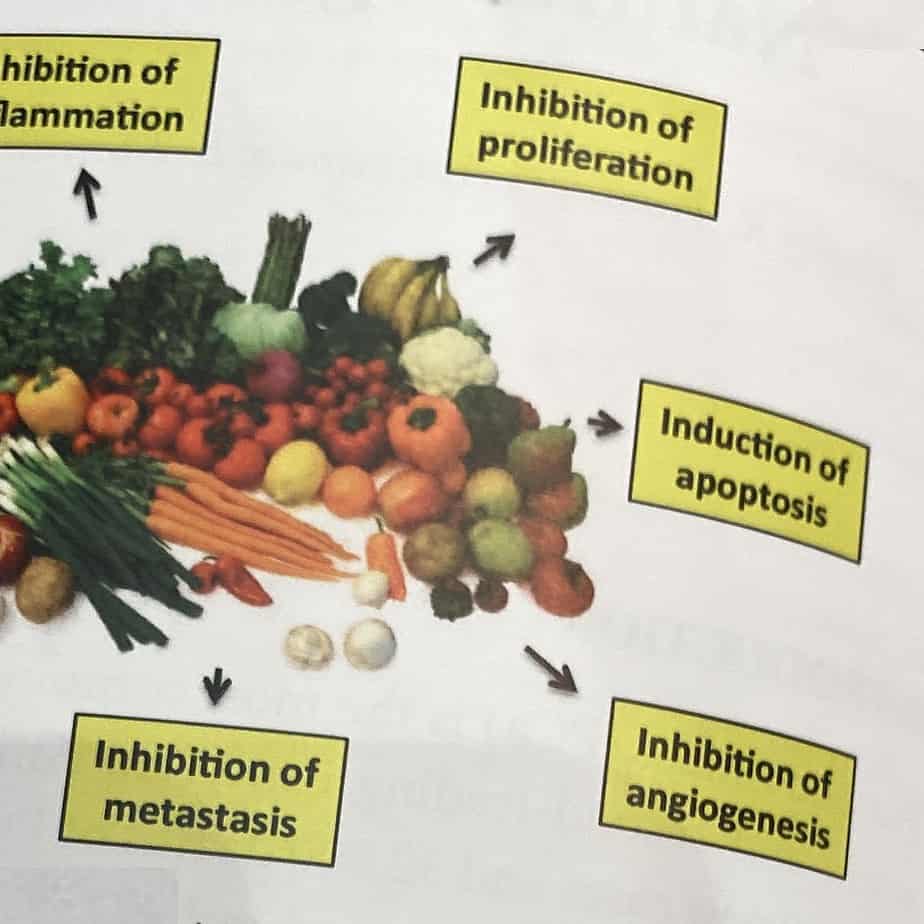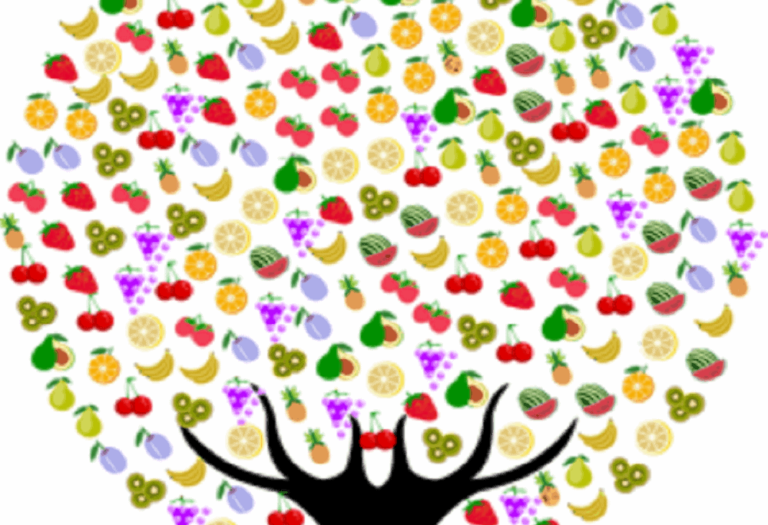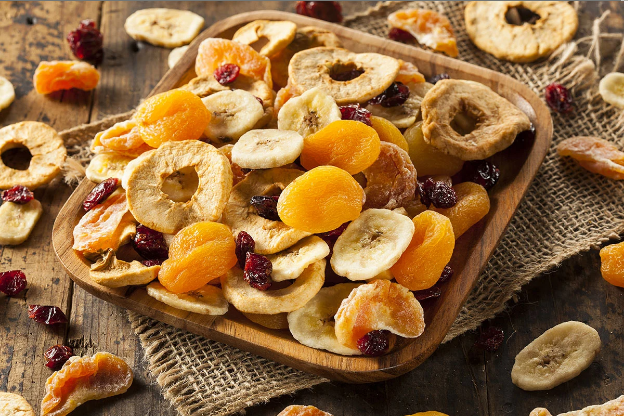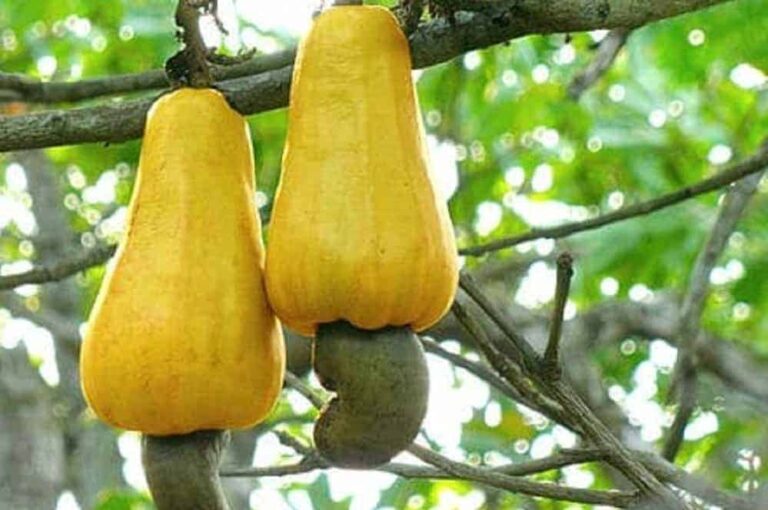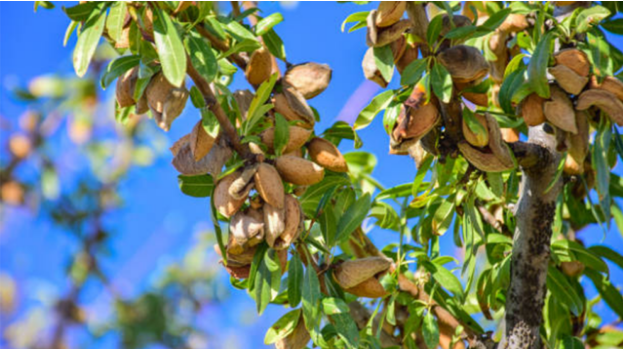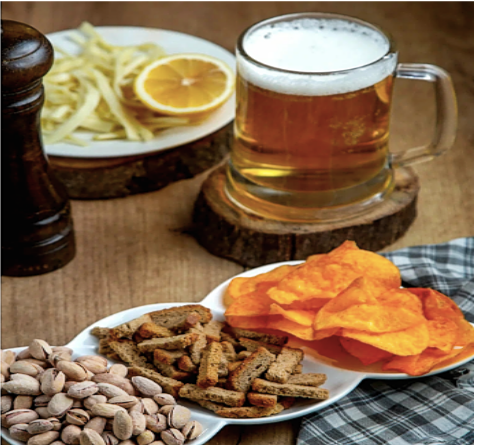Your cart is currently empty!
Prostate Cancer: How Helpful are Natural Agents for Prevention?
Prostate cancer (PCa) is the most common non-skin cancer in men in the world and the second-leading cancer in American men, with approximately 220,000 new cases and 32,000 deaths of prostate cancer in 2012. Out of the three well-known and indisputable risk factors, i.e., increasing age, ethnic origin, and hereditary/familial factors, age is the most significant risk factor for the development of prostate cancer, with a prevalence of approximately 35% in 60-69-year-old and 46% in 70-81-year-old men.
Growths in the prostate can be benign (non-cancerous) or malignant (cancerous). The prostate cancer cells can spread by breaking away from a prostate tumor. These cells travel through blood vessels or lymph vessels. Spreading to other body regions and growing to form new tumors may damage those tissues. When prostate cancer spreads from its original site to another part of the body, the new tumor has the same kind of abnormal cells as the primary tumor. That is why these new tumors are referred to as secondary tumors. For example, if prostate cancer spreads to the bones, the cancer cells in the bones will be prostate cancer cells. The disease is called metastatic prostate cancer, not bone cancer. How the initiation and progression of prostate cancer take place is only now being understood by researchers.
This post will cover the markers of prostate cancer, critical signaling pathways, and the importance of diets (mainly fruit and vegetable-based) for prostate cancer prevention.
Markers Of Prostate Cancer
The five markers of the prostate gland include:
- Prostate-Specific Antigen (PSA)
- Prostate Carcinoma-Associated Glycoprotein Complex (PAC),
- Prostatic Acid Phosphatase (PAP)
- Prostate Mucin Antigen (PMA)
- Prostate-Specific Membrane Antigen (PSMA)
However, only a subset of these markers has a specific association with prostate cancer.
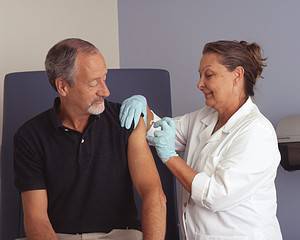
Genetics And The Role Of Signaling Pathways In The Development Of Prostate Cancer
Prostate cancer can divide epidemiologically into hereditary and sporadic forms. The latter is the most common. Genes for the inherited prostate cancer susceptibility genes have been identified. These new tests show that the proportion of cases of hereditary prostate cancer only attributable to germline mutations is very small. Only occasional mutations with these inherited genes have been identified in sporadic forms of prostate cancer. Subsequently, making it difficult to get hereditary testing right, which is the best way to test for other forms of cancer.
In 1997, the tumor suppressor gene PTEN was cloned from the 10q23 region. A region frequently targeted by loss of heterozygosity (LOH) in advanced cancers, including PCa. Thus, somatic inactivation of PTEN is common in PCa and it has become clear that the loss of PTEN and consequent activation of AKT is a critical event in the development of this disease, which presents a pathway for rationally targeted molecular therapeutics for the management of this disease.
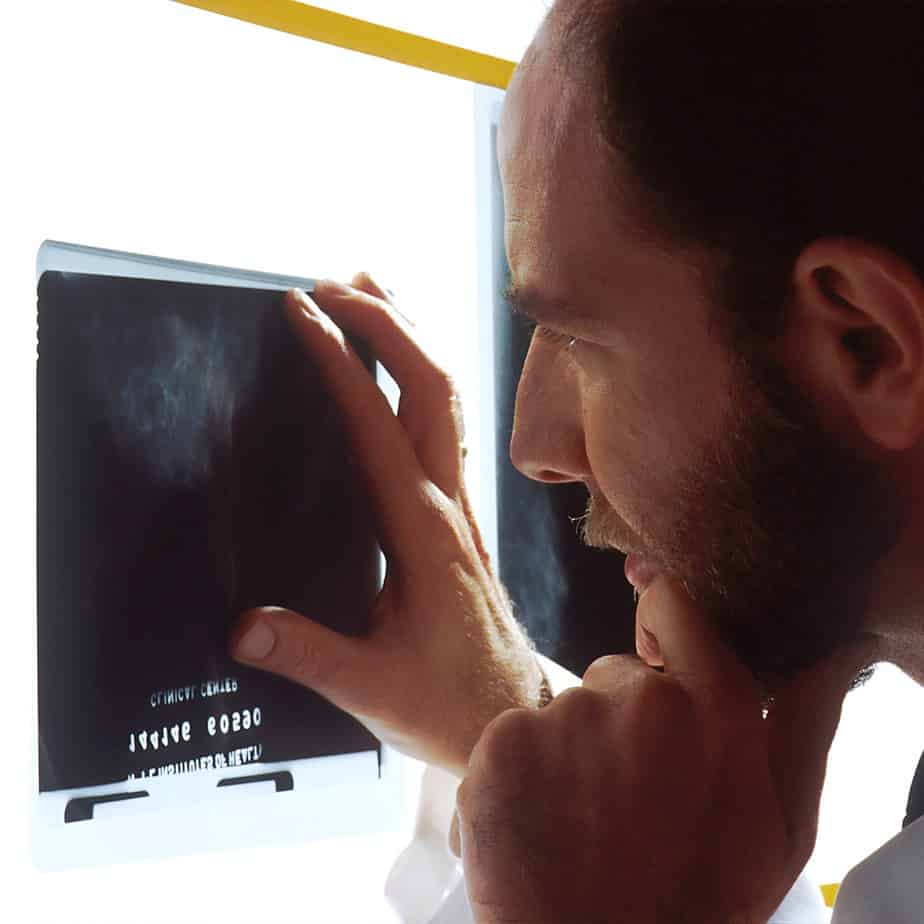
What is a somatic alteration?
An alteration in DNA that occurs after conception.
Inactivating mutations in PTEN
The interest in genetic alterations of the PTEN gene to halt prostate cancer started with the observation that prostate cancer cell lines harbor either a deletion or mutation. Somatic PTEN alterations have been reported for both localized and metastatic forms of prostate cancer. These studies suggest that the prevalence of PTEN mutation increases in metastatic prostate cancer.
As a consequence of cancer moving, it can mutate. Making it harder to isolate and treat. In conclusion, early detection is still the best cure for cancer.
Prostate Cancer Prevention: Is It Possible?
Originally proposed in 1976, the classical definition of cancer chemoprevention is using natural, synthetic, or biological chemical agents to reverse, suppress, or prevent. A strategy in the initial phase of carcinogenesis or the progression of neoplastic cells to cancer. In other words, getting cancer before it starts to spread. Over the past several years, research revealed that carcinogenesis is a multi-step process involving initiation, promotion, progression, tissue invasion, metastasis, and angiogenesis. During the process of carcinogenesis, many molecular changes occur inside the cell. These include genetic and epigenetic alterations, inactivation of tumor suppressor genes, activation of oncogenes, and modulation of different signaling pathways.
Identifying molecular mechanisms involved in carcinogenesis provides a rational approach to developing prostate cancer treatment and prevention strategies. Some of the evaluations of these molecularly targeted drugs in cancer prevention trials include inhibitors. The development of drugs for the big three of prostate, colon, and breast cancers is already on the market. They provide rational proof that molecularly targeted compounds have a high potential in the chemoprevention of these dominant forms of cancer worldwide.
Studies have shown that prostate cancer is an ideal candidate for chemoprevention because:
- Endocrine and hormonal dependency makes it susceptible to pharmacological manipulations.
- Prostate cancer progression is very slow (prostatic intraepithelial neoplasia (PIN) takes about 10 years to develop into an early invasive tumor) with a long latency period.
- Is a good serum marker for monitoring the progression of the disease.
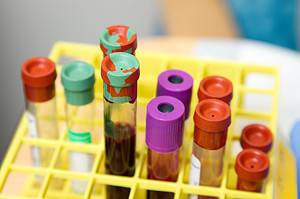
Herbal Compounds and Derivatives in the Prevention of Prostate Cancer
Prostate cancer is an ideal candidate for chemoprevention by natural products. Typically, the diagnosis is in men over 50 years of age. So, a delay in disease progression achieved through nutritional intervention could significantly impact a patient’s quality of life. Additionally, Asian diets and Chinese medical therapies incorporate an extensive array of plant-derived foods, herbs, and herbal extracts that contain numerous polyphenolic components. These compounds will be characterized by their diaryl nucleus and can be classified into flavones, flavonoids, isoflavones, and tannins. To date, more than 20,000 polyphenols have been isolated from Mother Nature. Furthermore, some of these compounds have evidence to possess cancer chemopreventive and therapeutic properties in preclinical and clinical settings. For example, polyphenols isolated from green tea, Scutellaria Baicalensis, soy, blueberries, cherries, and tomatoes. Evidently, this proves that preventing prostate cancer in rodent models and in humans is happening.
Soy Isoflavones
Interest in soy phytoestrogens and isoflavones stems mainly from epidemiological findings. They show that a lower incidence of prostate cancer occurs in Far Eastern countries where the consumption of soy products is typically high. Food sources rich in isoflavones include soybean, tofu, kidney beans, chickpeas, lentils, and peanuts.
The principal isoflavones in soy include genistein, daidzein, and biochanin A, which occur naturally as glucosidic conjugates. Metabolization happens in its active forms in the gut. Soy isoflavones have a broad range of mechanisms for their cancer chemopreventive and therapeutic properties against prostate cancer. Specifically altering the expression of numerous genes associated with prostate cancer, DNA topoisomerases, and tyrosine kinases. They work mainly through their estrogenic effect. These compounds bind to estrogen receptors, and this binding suppresses cell proliferation and promotes the differentiation of cancer cells. These compounds inhibit the proliferation of different prostate cancers in laboratory conditions and animal models.
Research On Soy Isoflavones Preventing Prostate Cancer
Many researchers have also evaluated the effect of soy isoflavones on preventing spontaneous prostate cancer. They found that these compounds prevent prostatic adenocarcinoma and increase the survival of TRAMP (transgenic mice with prostate cancer) mice by altering growth factor signaling and inhibiting the Akt/GSK-3 pathway.
The evaluation of the anticancer potential of soy isoflavones in patients with prostate cancer. These studies suggest that soy isoflavones modulated the expression of many biomarkers of prostate cancer prediction and progression without deleterious effects. In addition, several randomized studies of soy isoflavones as chemopreventive agents are.
Tomatoes and Lycopene
Tomatoes or tomato products ingested daily seem to reduce the risk of
prostate cancer. Specifically, this fruit category contains various chemopreventive and antineoplastic compounds such as carotenoids, polyphenols, and vitamins. Tomatoes contain high levels of lycopene, a lipophilic carotenoid that gives red fruits their characteristic pigment. Many epidemiological studies have shown that two or more servings of raw or cooked tomato products decrease the risk of prostate cancer. Furthermore, lycopene and tomato paste extracts inhibit cell proliferation and induce cell cycle arrest and apoptosis in prostate cancer cells.
Moreover, they have identified and analyzed 11 cohort studies and six nested case-control studies by searching international journal databases and reference lists of relevant publications, suggesting that tomato intake plays a modest role in preventing prostate cancer.
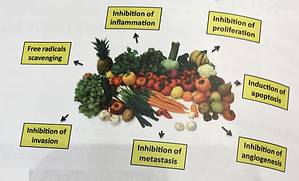
Cruciferous Vegetables
Crucifers, or the family Brassicaceae, include horseradish, bok choy, wasabi, broccoli, cabbage, cauliflower, Brussels sprouts, Chinese cabbage, and turnips. Cruciferous vegetables contain anticancer phytochemicals, which will convert into isothiocyanate metabolites in the body. This happens through the enzymatic action of plant-specific myrosinase or gut microflora. Evidence for the protective effect of crucifers against prostate cancer comes from epidemiological studies of dietary intake in the United States. Evidently, a diet rich in broccoli will reduce prostate cancer risk in men.
Sulforaphane is a naturally occurring isothiocyanate, which was first isolated and identified as a major inducer of quinine reductase in broccoli. This compound exhibits anti-proliferative and anti-metastatic properties. Demonstrated to protect carcinogen-induced different types of tumors in animals. However, studies in TRAMP mice have evaluated the pharmacodynamic action of broccoli against prostate tumorigenesis. The administration of a controlled study in which mice were given 240 mg of broccoli sprouts daily. Provided that the result is the inhibition of prostate tumor growth.
Garlic Compounds
Epidemiological studies suggest an inverse association between increased dietary intake of Allium vegetables, such as garlic, and prostate cancer risk. Garlic contains many organosulfur compounds, such as diallyl sulfide (DADS) and diallyl trisulfide (DATS), responsible for its anticancer effects.
Recent studies have shown that these compounds inhibit the activation of the STAT3 and AKT pathways. Evidently, inhibiting the expression of MMP-9 prevents prostate cancer cell proliferation, survival, invasion, and metastasis. Recent studies have also shown that diallyl trisulfide is more cytotoxic to prostate cancer cells than non-cancerous epithelial cells. Suppressing the growth of human prostate cancer cells placed in animals. In addition, developing a compound from garlic, S-allyl cysteine, and S-allyImercaptocysteine will inhibit prostate cancer growth in animals. Moreover, S-allyImercaptocysteine has been proven to enhance the effects of docetaxel. This will induce apoptosis in hormone-refractory prostate cancer cells.
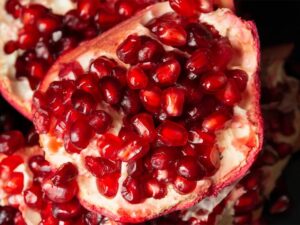
Pomegranate: A “Superfruit”
Pomegranate (Punica granatum) is a fruit-bearing deciduous shrub that grows throughout the Mediterranean region and the United States. This fruit has a thick reddish skin that encapsulates hundreds of small red seeds. When the seeds are crushed and dried, they produce a unique oil. 80% of which is punicic acid, a rare 18-carbon fatty acid. Specifically, this oil contains the isoflavone genistein and coumestrol, a phytoestrogen. Additionally, pomegranates possess high antioxidant properties; the term ‘superfruit’ is used along with blueberry and cranberry. The fruit is a rich source of anthocyanins, ellagic acid, and punicalagin, which account for most of the fruit’s antioxidant activity. The polyphenols from this fruit show that they inhibit the proliferation and invasion of cancer-causing prostate cancer cells.
The role of the pomegranate and its components is a research focus in animal models of this disease. Current research is on the consumption of pomegranate fruit extract. Inhibited prostate cancer development in TRAMP mice and prostate cancer cell growth. In conclusion, these studies suggest that pomegranate has a high potential for prevention and treatment.
Other Fruit In The Fight Against Prostate Cancer
In addition to the above-mentioned agents, many other fruit and vegetables have active ingredients that prove to possess cancer chemopreventive and therapeutic properties against prostate cancer. These compounds include polyphenols from mangosteens (Garcinia mangostana), citrus peel flavonoids, polar biophenolics from sweet potatoes, American cranberries, gallic acid, ursolic acid, and resveratrol. However, more studies to evaluate these findings in humans will happen soon.
The potential of fruit and vegetables in preventing prostate cancer is clear. In fact, The American Cancer Society suggests the following guidelines for the prevention of this form of cancer in men:
- Maintain a healthy diet with a focus on fruit and vegetables.
- Try to maintain a healthy weight.
- Perform regular physical exercise.
- Reduce alcohol intake.
To adopt a healthy diet with a focus on fruit and vegetables:
- Eat different fruits and vegetables every day.
- Eat whole wheat rather than refined wheat products.
- Eat only small quantities of meat products and red meat.

